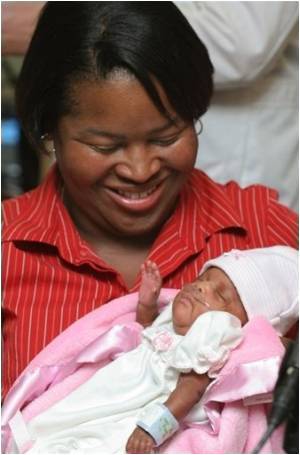It is time to address the problems that Bihar is struggling to emerge from centuries old backwardness and debilitating social divisions faces now that a new government is in place.

This accompanied by a lack of facilities to cater to the pregnant and lactating women who are often 'girls' in rural areas makes for a disturbing scenario. In the rural milieu, prenatal and postnatal health care of women and infants is even today abysmal. The high infant (IMR) and maternal mortality rates (MMR) are testimony to this state of affairs.
Actually it is not only a matter of institutional mechanisms being in place or a slew of facilities to cater to these needs although these are undoubtedly essential. The mind-set in rural areas is what needs to change or at least subtly shift. The perception is that pregnancy is not the right of women, it is duty they are bound to fulfill in accordance with the laws of society as defined by the patriarchal society.
In rural areas girls who have remained out of the school system are married off early and find themselves saddled with the responsibility of running a household, of becoming mothers without really knowing about their own bodies let alone the stages that they then go through.
The challenge in Bihar is thus not limited to schools being set up or cycles being provided or even health centers being opened up but more about linking all these together to ensure that girls are made more aware, more mature of their lives and take responsibility for it.
The educational status of the state is poor. The literacy rate for girls is around 45% and more than two million children here are out of schools. Of these about 7 lakh children belong to Scheduled Caste communities and eight lakh to the Muslim community. About 83% children belonging to SC communities drop out of school after 8th standard.
Advertisement
There is then a connect between low level of education and early marriage or child marriage and the slew of problems that arise from it. In a survey conducted by Population Council, a Delhi based organisation, of 6 states facing similar situation, incidences of child marriage in Bihar are the highest.
Advertisement
The Infant Mortality Rate in the state is a shocking 62. It is indeed a vicious cycle. 68.2% of women in Bihar within the age group of 15-49 are anemic and 10% children suffer from malnutrition. (NFHS-3) The high Maternity Mortality Rate (MMR) of 452 can equally be attributed to this.
The government needs to take serious note of this scenario and plan its interventions in a way that will effectively turn the situation around. Emphasis on institutional deliveries through the network of health workers, ANM's needs priority attention. Awareness programmes geared towards confining pregnancies to the age group of 20-29 years is an urgent requirement to spread the message amongst rural communities.
One of the most important breakthrough in the socio-cultural mindset would be to delay not only marriage but the birth of the first child. To take it to another stage, impressing upon the people the need to space the deliveries of the first and second child over three years. Obviously a massive blitz of campaigning using imaginative communication tools is called for. This needs to be necessarily met with a strengthening of infrastructure and facilities in health. One without the other would be futile.
Legislation on the issue of child marriage and enforcement of Family Planning programmes has fallen short. Even today the use of condoms in the villages of Bihar is 2.3%, while of birth control pills is a mere 1.3% and of UD is even more miniscule, only 0.6%. This serves to strengthen the reason for attitudinal change accompanying or even preceding initiatives on the ground.
The practice of institutional deliveries follows a similarly pathetic trajectory. In districts of Madhubani, Shivhar and Araria only 7-9% deliveries are institutional. Across the state 77% deliveries are being done under the supervision of untrained birth attendants. Here the lack of health infrastructure especially in flood-prone regions is hard-hitting. The distance between many rural areas and the nearest hospital makes the journey difficult for a pregnant woman. During floods, the journey becomes insurmountable and leads to tragedies.
Yes there has been some improvement of late; but still it falls short of transforming the health sector in any substantial way and lifting the mothers and children of Bihar from the morass of deprivation and debility. The Charkha Development Communication Network feels that this is what people of the State are now seeking and expecting from the newly elected government with its renewed mandate to change the face of Bihar. By Rajeev Kumar
Source-ANI










